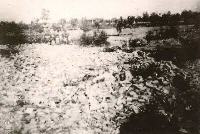Part of a series celebrating 100 years of the AAVSO
This month's AAVSO Newsletter carries an item about one of our 100th anniversary celebratory "events": an AAVSO Trivia Challenge, which has already begun online.
The 120 or so funny, odd, or otherwise intriguing trivia items in the challenge all were discovered in the AAVSO archives over the years. We at Headquarters think you'll have as much fun discovering these hidden bits of AAVSO history as we did. I wouldn't call them "gems" exactly, some are more like lumps of coal—but they all can be considered intriguing "found objects."
In the AAVSO's collection of correspondence from our members, observers, professional astronomers, and others—aside from the obvious items pertaining to variable star astronomy, observations, and the like—there is much to be found that tells the story of the individual who was making the observations or asking about the data.
On the prosaic and amusing side, for example, there's the apology from founding member Charles McAteer who wrote one time that he got mad at his chart and tore it up, and another time he wrote that his monthly report was low because he had been to the dentist to have several teeth "drawn."
And there are letters like the one from Tom Cragg who had set up his telescope in a field in Los Angeles in the 1950s one night, to be confronted by the police who almost could not be convinced that he was just stargazing. Then, on the quite serious and sobering side, are the letters written to the AAVSO from observers in Europe and Asia during the second world war: the letters of Felix de Roy of Belgium, for example, show the growing strain he and others felt as resources grew scarcer and repression grew—including blocks of text in his letters blackened or cut out by censors.
Then, on the quite serious and sobering side, are the letters written to the AAVSO from observers in Europe and Asia during the second world war: the letters of Felix de Roy of Belgium, for example, show the growing strain he and others felt as resources grew scarcer and repression grew—including blocks of text in his letters blackened or cut out by censors.
And then there are the photographs sent by Giovanni Lacchini of Faenza, Italy—an AAVSO observer since 1912—showing that what was left of his observatory and ancestral home was only one huge bomb crater. But Lacchini kept sending his observations to the AAVSO, and continued to do so until his death in 1967. Happily, too, there were such member/observers as J. Russell Smith of Eagle Pass, Texas, who returned from the war in Europe (he wrote to Margaret Mayall that he "saw Europe from a foxhole"), resumed his work as a science teacher, published a well-received book on teaching astronomy, and continued with his variable star observing. He observed regularly until old age forced him to sell his observatory in the early 1980s.
Happily, too, there were such member/observers as J. Russell Smith of Eagle Pass, Texas, who returned from the war in Europe (he wrote to Margaret Mayall that he "saw Europe from a foxhole"), resumed his work as a science teacher, published a well-received book on teaching astronomy, and continued with his variable star observing. He observed regularly until old age forced him to sell his observatory in the early 1980s.
Working through the correspondence archive in search of scientific or historical facts often results in such surprises of joy or sadness. The common denominator, however, is how encouraging it is to find the individuals behind the observations—persistent, dedicated, and devoted to variable star astronomy.

